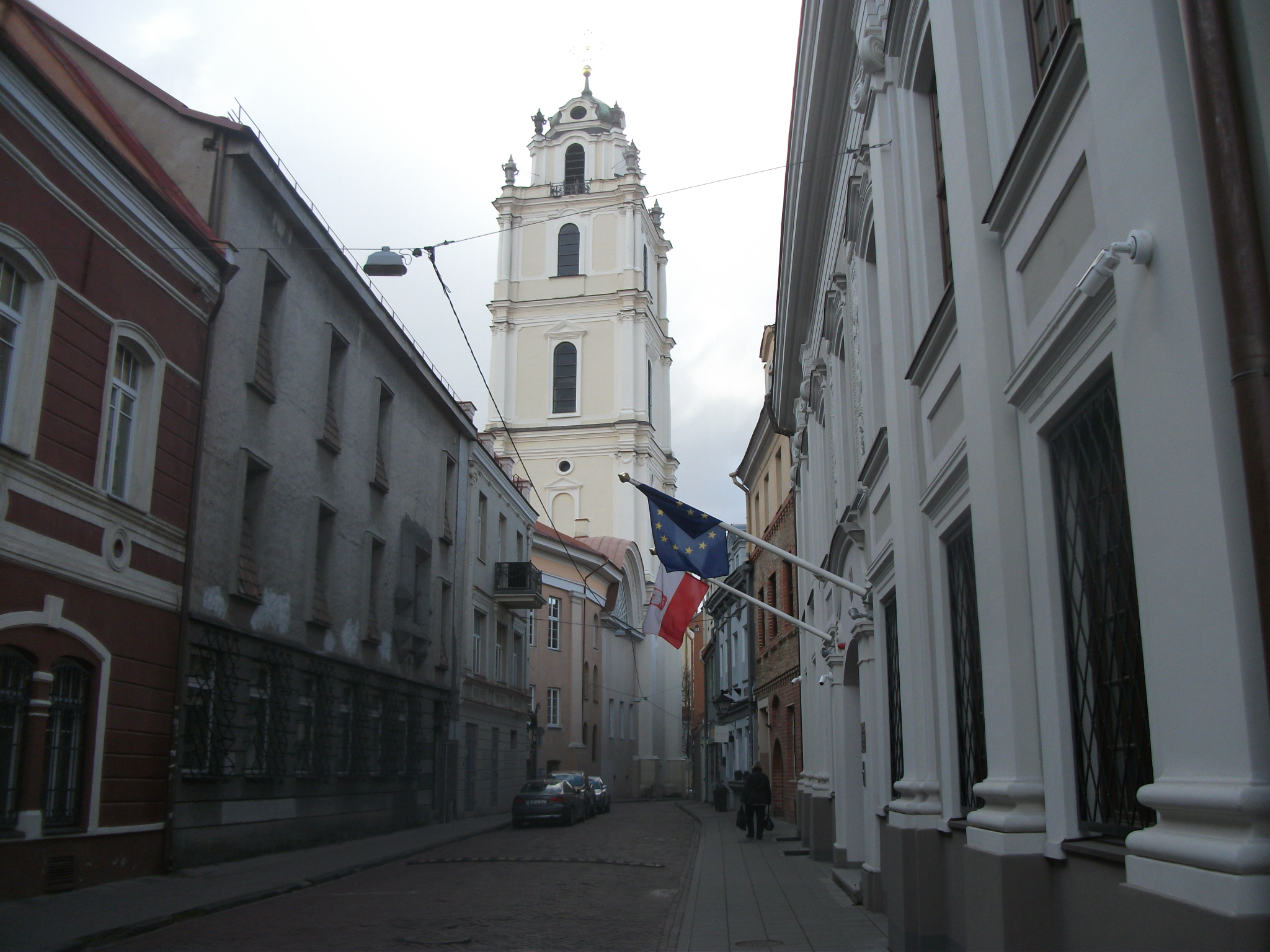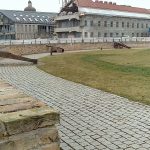
The architect of the Vilnius Bastion is unknown. The building that rose in the early 17th century is attributed to the period of late Renaissance and in that period Vilnius did not have a municipal architectThe wars of the mid-17th century and the 18th century weakened the military power of the Grand Duchy of Lithuania. The army led by the Russian Emperor Aleksey Mikhailovich approached Vilnius in August 1655 and seized the cityWhen Vilnius was liberated in 1660, the city's defensive fortifications needed repair. However, there was not enough funds and the citizens were unable to maintain defensive fortifications, supply them with arms and gunpowder and provide securityAll photos are copyrighted by Vladislav B. Sotirovic© Vladislav B. Sotirovic 2020
Continue Reading

Tour № 1 – Šventaragis ValleyCathedral Basilica of St. Stanislaus & St. VladislausCathedral Basilica of St. Stanislaus & St. Vladislaus (inside, including the Chapel of St. Casimir, the Chapel of Deportees, the Gasztołd Chapel, the Royal Chapel, St. Wladislaw/Vladislaus/Ladislav Chapel, High alter, Memorial plague to the Grand Duke of Lithuania Vytautas Magnus, the Sapieha Madona’s picture, etc)Cathedral Basilica Bell TowerRoyal Palace of Lithuania (the Palace of Grand Dukes of the Grand Duchy of Lithuania)Upper CastleUpper Castle’s West (Gediminas) TowerOld Arsenal – Museum of Applied ArtNew Arsenal – Lithuanian National MuseumMonument to King Mindaugas (1236-1263: Crowned King on July 6th, 1253)Monument to Lithuanian Grand Duke Gediminas (1316-1341: the founder of Gediminian-Jagiellonian ruling dynasty)Tour № 2 – Vilnius University & Monastery QuarterVilnius University – Historical Campus (est. 1579)Vilnius University – the Bronze door of the Central LibraryVilnius University – Historical Campus (inside, including 12 university’s courtyards, Domus Philologiae, Smuglevičius Hall, White (Observatory) ...
Continue Reading
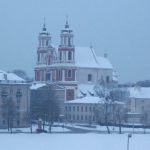
The present church was built in the late 17th century, after its predecessor was burnt down in the 1655 during the war with Russia. The church was completed only in the middle of the 18th century The nave is 24 metres high, making it the tallest in Vilnius; and its length is the same, with accounts for its concentrated appearance when viewed from the sideIn the north tower is a particularly ornate chapel, dedicated to the Dominican St. Hyacinth, with frescoes depicting scenes from his life. The fresco above the entrance depicts the Virgin Mary and Angels. The church was returned to the Dominicans in 1993All photos are copyrighted by Vladislav B. Sotirovic© Vladislav B. Sotirovic 2018
Continue Reading
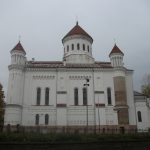
The church is endowed by Juliana, the wife of Lithuania's Grand Duke Algirdas (1345-1377) and mother of Lithuania's and Poland's ruler Jogaila. Grand Duke of Lithuania Jogaila baptized Lithuania in 1387. She was buried in the churchFragments of Gothic masonry have survived in the bottom part and in some segments up to the top. The present façades and the cupola imitate Georgian medieval architectureIn 1415 the church was transformed into a cathedral. In 1511-1522 it was reconstructed by Prince Constantine Ostrogsky. In 1516 Helen (a Russian Orthodox), wife of Alexander Jagiellon (Polish King and Lithuanian Grand Duke) was buried there. In 1609 the cathedral was given to the Uniates (Greek Catholics). In 1865-1868 it rendered its present appearance, and it began to function as a church again All photos are copyrighted by Vladislav B. Sotirovic© Vladislav B. Sotirovic 2018
Continue Reading
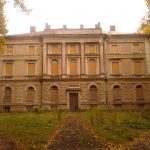
The historical building in Tyzenhauzų Str. in VilniusTyzenhauzų Str. building in VilniusTyzenhauzų Str. building in VilniusAll photos are copyrighted by Vladislav B. Sotirovic© Vladislav B. Sotirovic 2021
Continue Reading
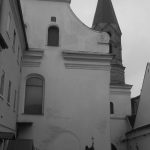
This is the first Evangelical Lutheran Church (Kirche) built-in Vilnius in 1555 on the initiative of the Chancellor of the Grand Duchy of Lithuania Nicholas Radziwiłł the Black. In front of the church, there is a monument erected to Martin Luther The church was rebuilt in 1662 and substantially reconstructed in 1738-1744. In 1944 it was closed down. In 1993 it was returned to the parishioners and renovatedThe church has a single nave and an original pentagonal shape. Its magnificent high altar was designed by German Protestant architect Jan (Johan) Krzysztof GlaubitzAll photos are copyrighted by Vladislav B. Sotirovic© Vladislav B. Sotirovic 2019
Continue Reading

Šiltadaržio St. is ending at Bernardinų St.Art Printing House Culture Center with the Theater in the streetIn the streeet, there is a Toy Museum and other cultural atractionsAll photos are copyrighted by Vladislav B. Sotirovic© Vladislav B. Sotirovic 2020
Continue Reading

Cathedral Basilica of St. Stanislaus and St. Vladislaus in Vilnius. Today the Cathedral Basilica is in the Classicist style as it was redisigned in 1783-1801 by Lithuanian architect Laurynas Gucevičius Baroque-style Cathedral's St. Casimir's Chapel built in 1610-1632 for holding the remains of St. Casimir (declared in 1604 by Pope Clemens VIII as the saint Cathedral Basilica Bell Tower. It is rebuilt tower that was part of the defensive wall that encircled the Lower CastleSaveAll photos are copyrighted by Vladislav B. Sotirovic© Vladislav B. Sotirovic 2018
Continue Reading

Grand Duke Gediminas is considered as the founder of the city of Vilnius. The monument is located in front of the Royal Palace and Cathedral Basilica in the very downtown of VilniusGediminas was a diplomatic politician, creating ties with the Roman Pope and other European rulers. He created favourable conditions for merchants and guildsmen to come to the city. Gediminas was a Grand Duke of the Grand Duchy of Lithuania from 1316 to 1341During the time of Gediminas, people of different ethnicities and confessions began to live in Vilnius. He is the founder of the Gediminian-Jagelonian ruling dynasty of Lithuania and later of Poland as well (till 1572)All photos are copyrighted by Vladislav B. Sotirovic© Vladislav B. Sotirovic 2018
Continue Reading

Universiteto St. 3 - The oldest building of Vilnius University with Gothic elements stands there dating from early 16th centuryThe Brzostowski estate. In 1667-69, a plot of land with buildings was bought by a diplomat, later the Trakai voivode Cyprian Pawel Brzostowski. The exterior and interior of the palace was decorated by architect Martin Knackfuss in 1769Alumni house. It was the Ecclesiastical Seminary founded by Pope Gregory XII in 1582. A three-storey palace with arccades was built in 1622All photos are copyrighted by Vladislav B. Sotirovic© Vladislav B. Sotirovic 2020
Continue Reading
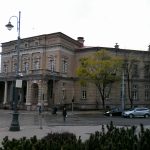
The Library of the Lithuanian Academy of Sciences was established in 1941 together with the Academy of Sciences, in the building of the former State Wróblewski LibraryBetween two world wars, State Wróblewski Library was one of the largest libraries in Vilnius. It was founded by lower Tadeusz Wróblewski. In 1941, the new Library inherited from it some 163.000 volumes, more than 35.000 manuscripts, large collections of numismatics, cartography, and artworksAfter WWII, the Library was supplemented by extensive collections from other libraries. Today, its stocks count more than 3.77 mln itemsAll photos are copyrighted by Vladislav B. Sotirovic© Vladislav B. Sotirovic 2020
Continue Reading

Christmas Tree decoration at the Cathedral Basilica Square in Vilnius. The belfry is seen in the backgroundChristmas decoration in front of the principal building of the castle complex in Vilnius Old Town - Cathedral BasilicaCathedral Basilica of Vilnius is erected on the place of the pagan altar with a ceasred fire to the pagan god Perkūnas (god of Thunder)All photos are copyrighted by Vladislav B. Sotirovic© Vladislav B. Sotirovic 2019
Continue Reading
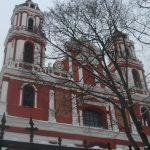
The church was built on the north side of the Lukiškių Square in 1624. However, the present building dates from the late 17th-18th cent.It is a single-nave Baroque church with cylindrical vaults. An image of the miraculous painting of the 18th century high altar occupies the niche above the porticoThe niches hold wooden 18th cent. statues of St. Hyacinth and St. Dominic. During the Soviet times there were designs to demolish the church but it did not ever happenAll photos are copyrighted by Vladislav B. Sotirovic© Vladislav B. Sotirovic 2018
Continue Reading

The church received its current form in 1738-1749 after fires in the cityThe church was rebuilted by Vilnius Baroque architect J. K. Glaubitz in the ornate Late Baroque style, and installed 24 altars insite The church bell tower received its current shape in 1737. The bell tower is 68 m tall. It is the tallest building in Vilnius Old TownAll photos are copyrighted by Vladislav B. Sotirovic© Vladislav B. Sotirovic 2018
Continue Reading

The church is inconspicuous from the street, as its façade does not face the streetThe 51 meter-tall dome can be seen from seven Old Town streetsThe Dominican Church of the Holy Spirit is one of the most magnificent churches in Vilnius. It is an excellent monument of high and late Baroque All photos are copyrighted by Vladislav B. Sotirovic© Vladislav B. Sotirovic 2018
Continue Reading

Its foundations are superimposed on the remains of a square tower, one of the oldest brick buildings in Lithuania, whose bricks are bound in the pre-Cothis (Baltic) manner An oval four-story tower with loopholes was built on these remains. Originally, it was a defensive tower of the Lower CastleThe underground square part dates from the 13th century, and the round part - from the late 14th century All photos are copyrighted by Vladislav B. Sotirovic© Vladislav B. Sotirovic 2019
Continue Reading
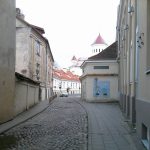
The Grand Duke of Lithuania Sigismund (1432-1440), who ruled briefly after the death of his brother Vytautas the Great (died in 1430), granted equal rights to the Russian Orthodox believers living in the capital-city of Vilnius - before long they came to constitute one half of the members of the city board and guild elders In the Middle Ages Vilnius (today Old Town) was increasingly multy-national as it was the case with the Grand Duchy of Lithuania as well. The city was, in fact, divided into four quarters according to the ethnic and religious belonging of its citizens: the German Quarter, the Russian Quarter, the Jewish Quarter, and the Tartar Quarter. Each of these city quarters had the main street named according to the ethnic belonging of their inhabitantsThe Russian Street in Old Town of Vilnius ends with the Russian Orthodox Cathedral (Sobor) of the Dormition of the Holy Mother ...
Continue Reading

The chapel was built in 1624-1636 to hold the remains of St. Casimir who was canonized in 1604. The chapel is part of the Cathedral Basilica in Vilnius The construction of the Early Roman Baroque-style chapel was funded by rulers Sigismund and Vladislaus Vasa. It was a place where the Grand Dukes of Lithuania prayed and could be reached by a corridor joined to the Lower CastleThe chapel is the work of Italian masters and one of the most beautiful Baroque mausoleums in Lithuania All photos are copyrighted by Vladislav B. Sotirovic© Vladislav B. Sotirovic 2019
Continue Reading

Three crosses are believed to have first been erected on this hill above the Old Town of Vilnius in the 17th century to commemorate a group of 14 Franciscan monks from a nearby monastery who were martyred in the 14th century The monument has changed several times. The present one was built in 1989 to replace one that had been removed by the Soviet authorities in the 1950sOne of the best panoramic views of the Old Town of Vilnius is offered from the Hill of Three CrossesAll photos are copyrighted by Vladislav B. Sotirovic© Vladislav B. Sotirovic 2020
Continue Reading

The Galera Gallery in the Užupis Art Incubator also operates there, where exhibitions of various kinds of art are organizedGalera of Užupis is an Alternative art gallery. That is a place similar to the former Christiana district in Copenhagen in DenmarkThe Užupis district and its Art Incubator are separated from the Old Town in Vilnius on three sides by the River Vilnia, and by a high hill on the fourth sideAll photos are copyrighted by Vladislav B. Sotirovic© Vladislav B. Sotirovic 2020
Continue Reading
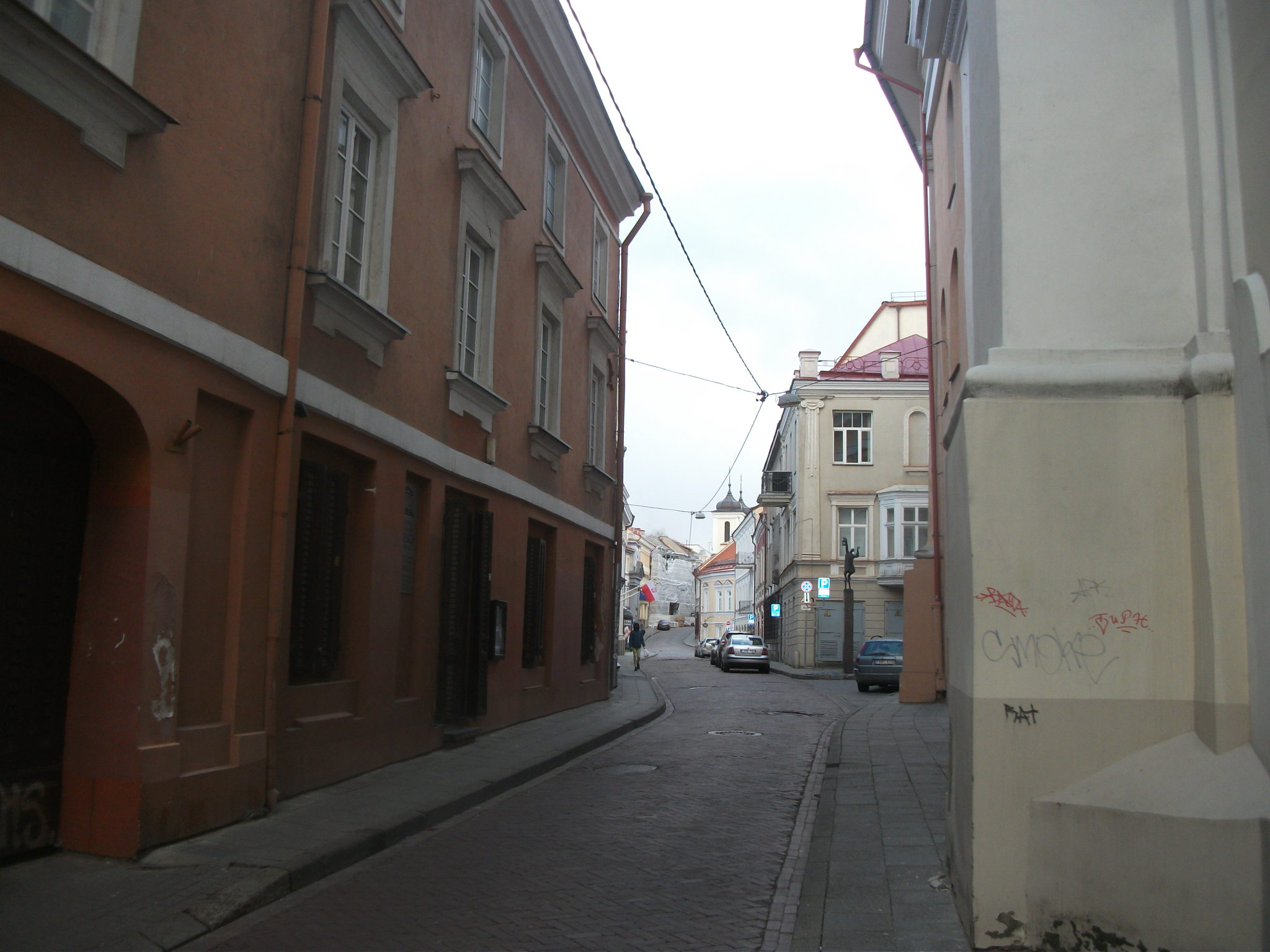 In this street, it was used to be a market place where it meets Pilies street. The first Town Hall is also believed to have stood on this spot
In this street, it was used to be a market place where it meets Pilies street. The first Town Hall is also believed to have stood on this spot 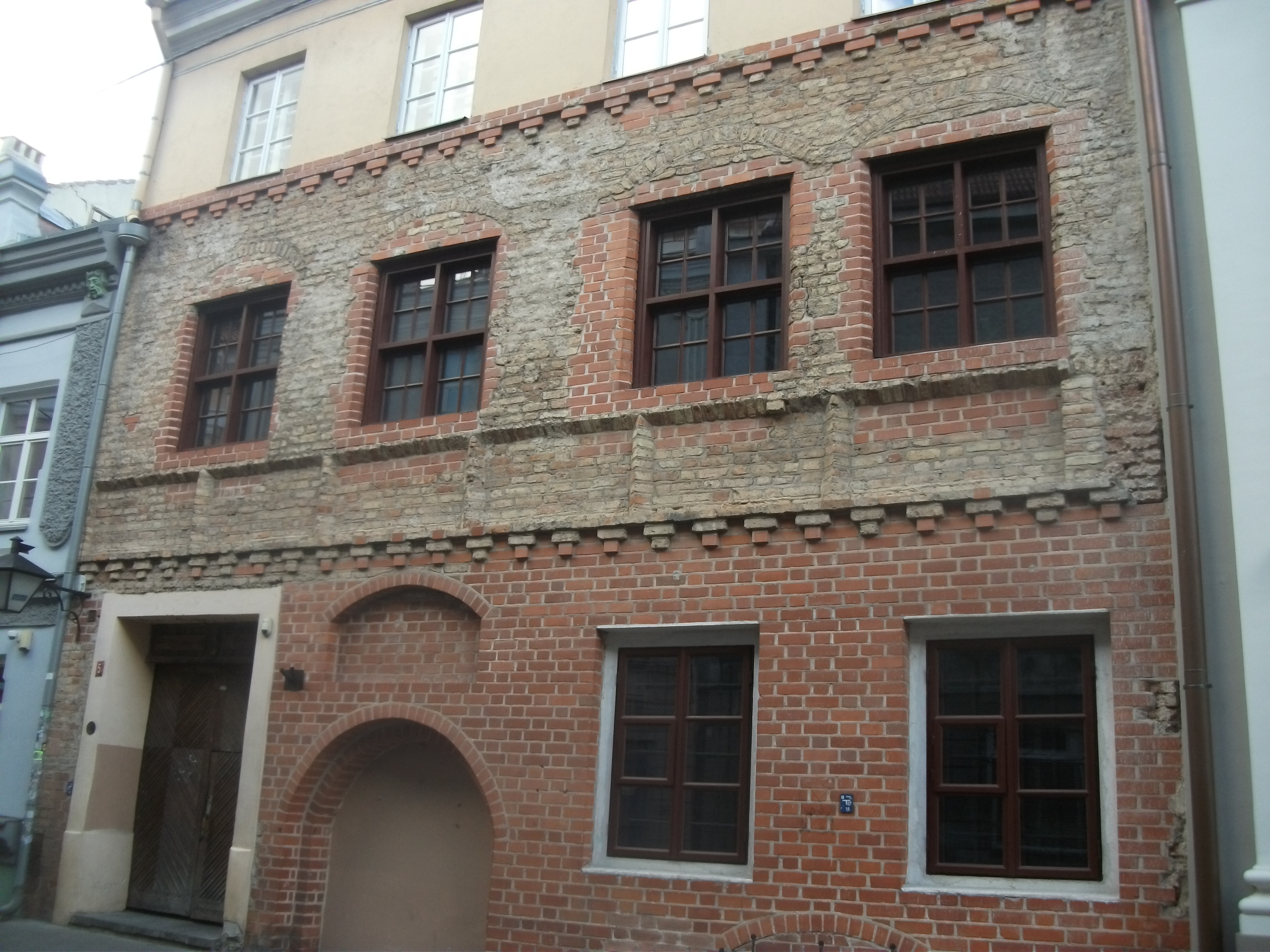 Pharmacy house in St. John St. No. 5. Georg Schulz’s pharmacy operated in this house since 1639. During the war in 1655, the house was burned down. In 1781, pharmacist Koszyk acquired the ruined building and reconstructed it
Pharmacy house in St. John St. No. 5. Georg Schulz’s pharmacy operated in this house since 1639. During the war in 1655, the house was burned down. In 1781, pharmacist Koszyk acquired the ruined building and reconstructed it  The Pac estate. Since 1628, the building belonged to the Pac magnate family of the Grand Duchy of Lithuania. In 1783, the dilapidated building was bought, renovated and decorated by the Chancellor of the Grand Duchy of Lithuania – Alexander Michael Sapieha. Currently, the building belongs to the Polish Embassy
The Pac estate. Since 1628, the building belonged to the Pac magnate family of the Grand Duchy of Lithuania. In 1783, the dilapidated building was bought, renovated and decorated by the Chancellor of the Grand Duchy of Lithuania – Alexander Michael Sapieha. Currently, the building belongs to the Polish Embassy 




















